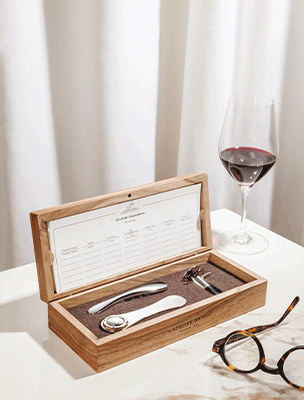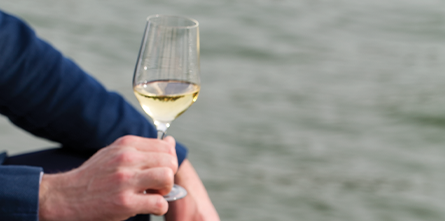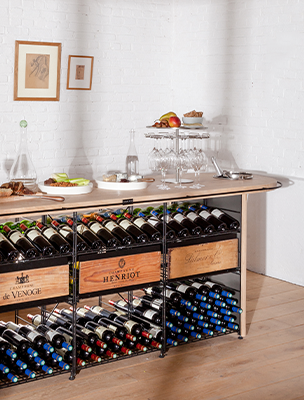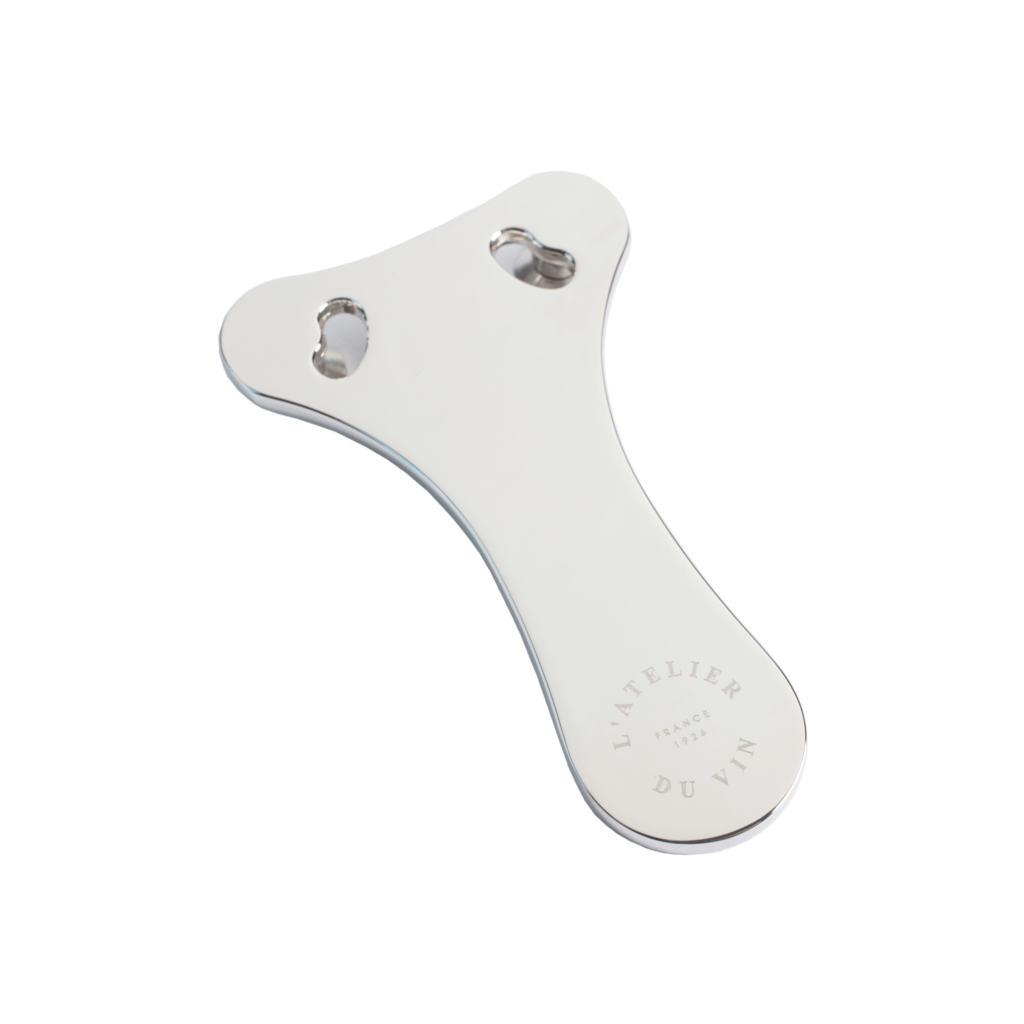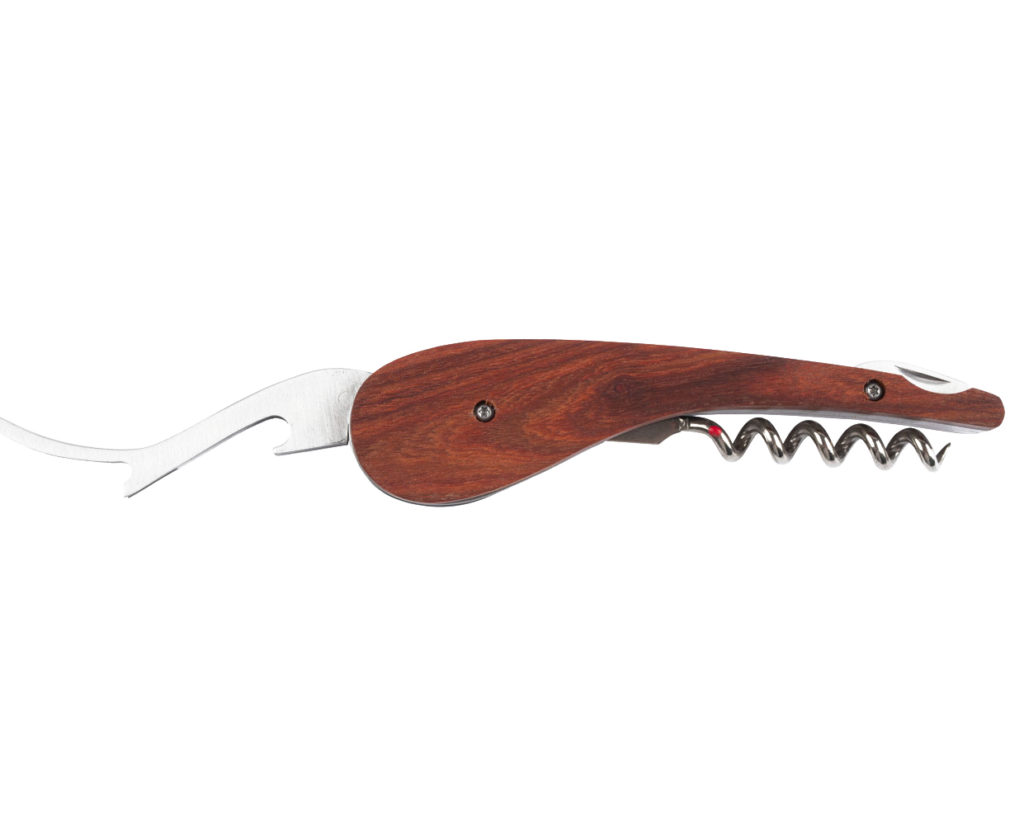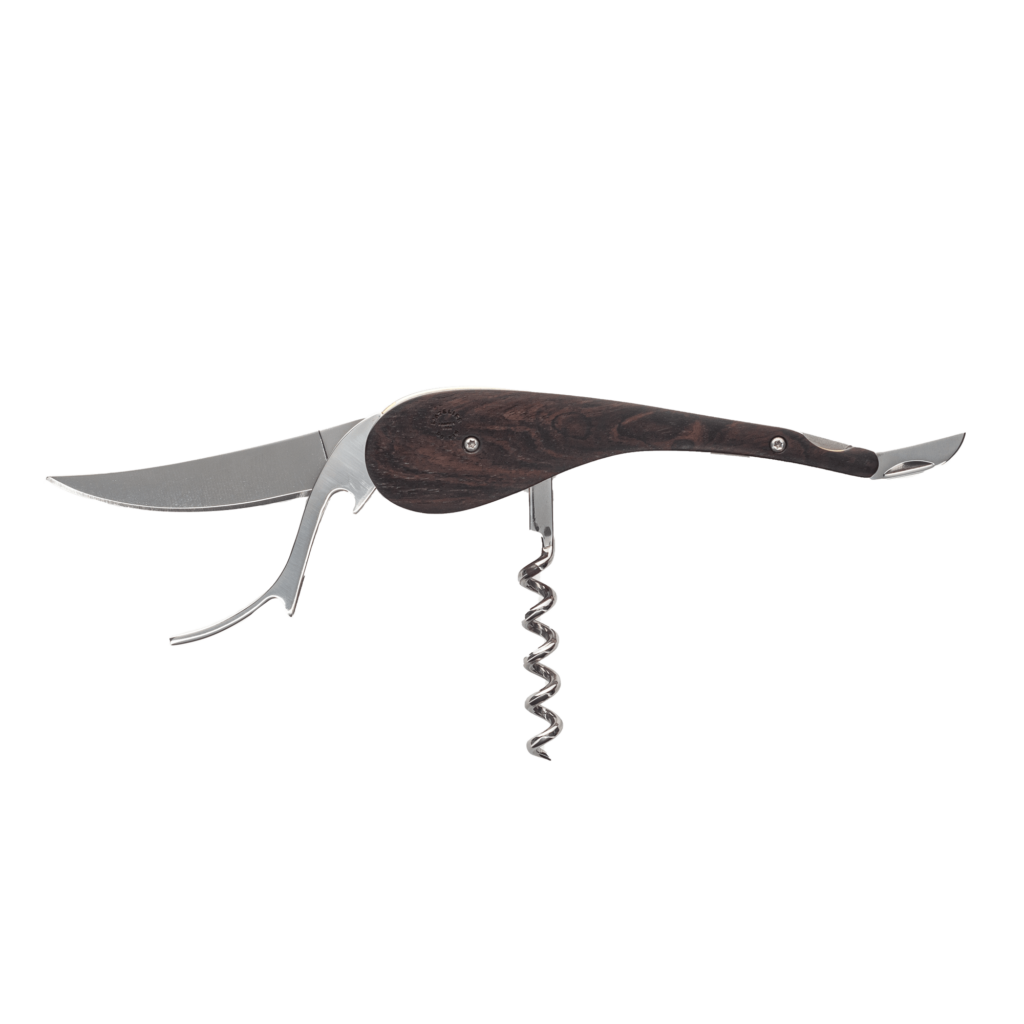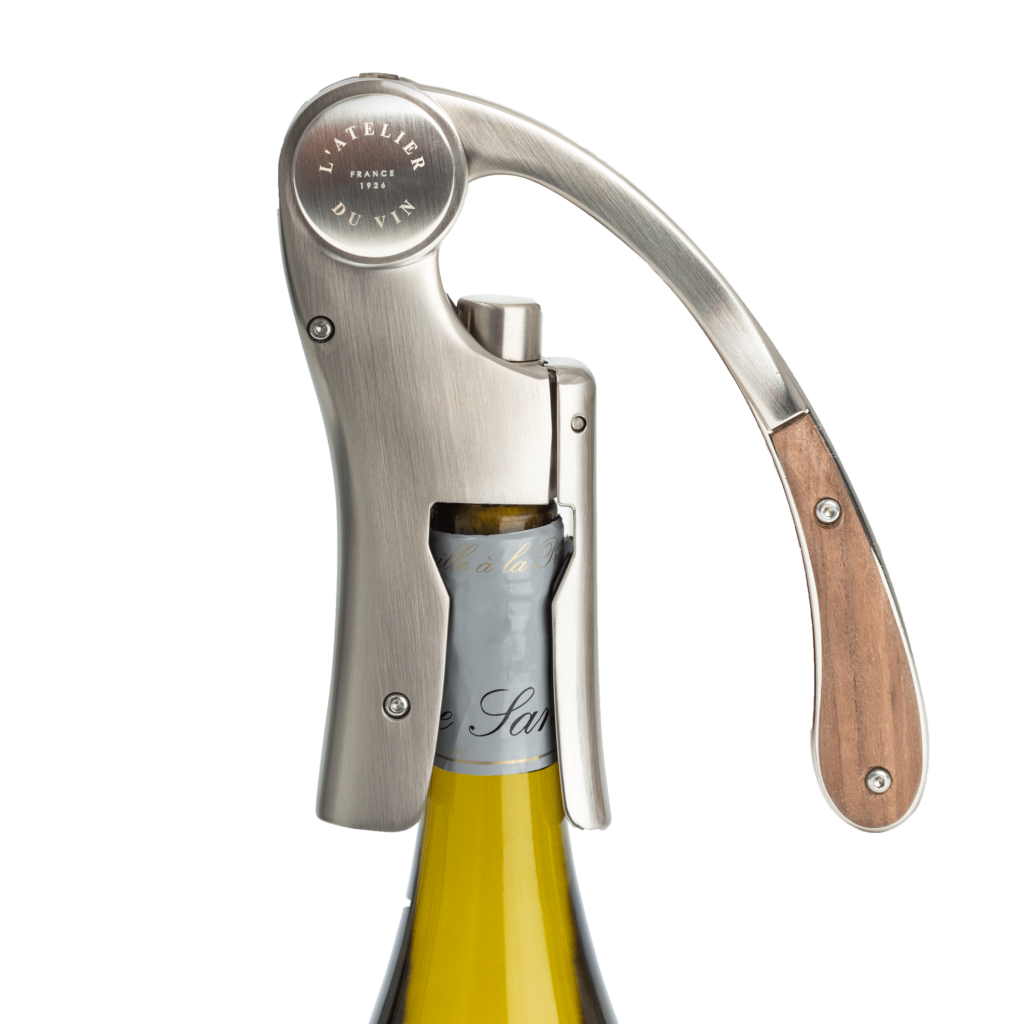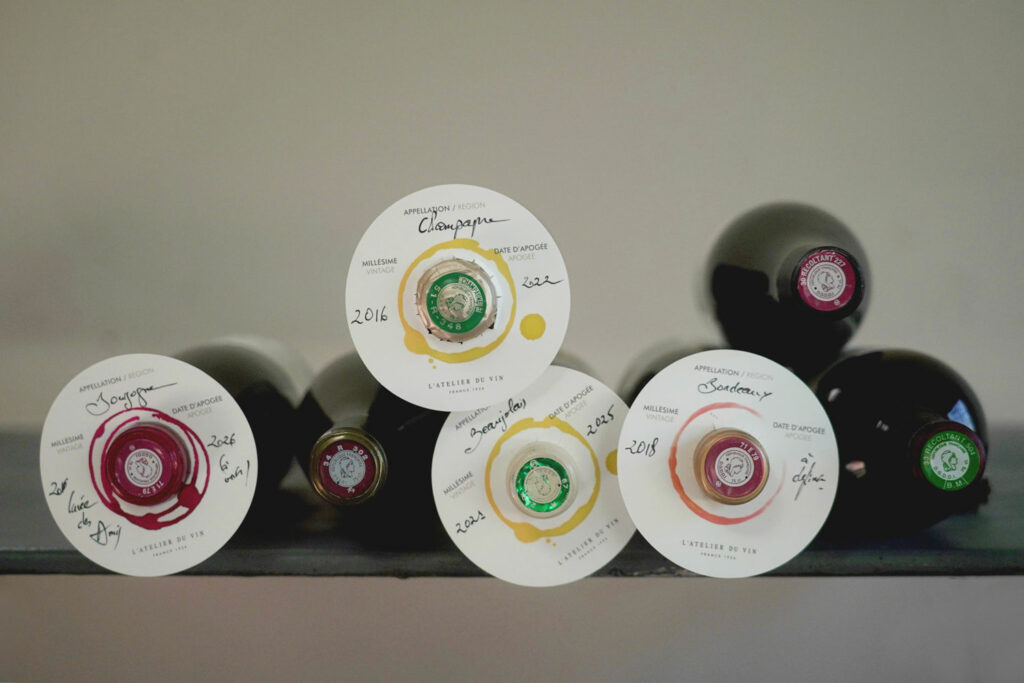
Wine bottle capsules spark wine lovers’ curiosity and contain valuable information for bottlers and customs officers. So what do the tiny markings on the top of the cap mean? You could spend a lifetime exploring vineyards and great wines without knowing. L’Atelier du Vin, a French manufacturer of wine tools since 1926, explains everything you need to know about wine bottle capsules before cutting them.
What Is a CRD or ‘Capsule-Congé’?
In France, the official name for a wine bottle capsule is Capsule Représentative de Droit (CRD) or capsule-congé. It is made up of two elements. The ‘capsule’ part refers to the thin layer of foil (formerly made out of lead or tin) which covers and protects the neck. The ‘congé’ part is located on top of the capsule. This printed and coloured paper stamp contains administrative information about the bottler. A wine capsule is therefore a protective sleeve and an administrative document with information for customs authorities about its bottling.
A Brief History of Wine Capsules
Up until the 19th century, wine bottle necks were covered in wax to ensure that they were properly sealed and airtight. Some bottlers used tar instead.
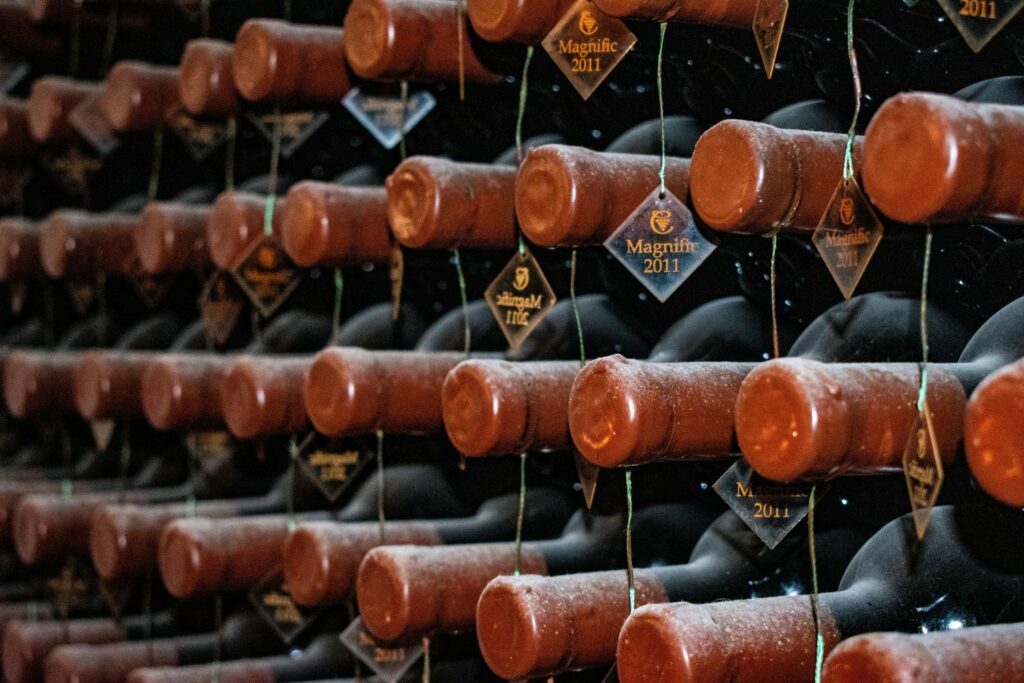
The very first wine bottle capsule in history, made of metallic paper, was invented in 1833 by André Georges Dupré. This ingenious wine and spirits merchant perfected his invention and patented this bottling process, which is still widely used today.
How to Read the Information on a Wine Bottle Capsule
The top part of a Capsule Représentative de Droit or CRD capsule, otherwise known as the ‘congé’, features a ‘pion fiscal’, or tax stamp (in the centre), and a crown (around the edge). Both of these parts of the capsule-congé include information about the wine and its bottling and indicate that all taxes have been paid for transport and sale. Let’s take a closer look at what each of these elements mean.
Tax Stamp Markings and Symbols
Wine produced in France includes the following information in the middle of the capsule:
- An image of Marianne
- ‘République Française’
- The acronym ‘DGDDI’ for Direction Générale des Douanes et des Droits Indirects (Directorate-General of Customs and Indirect Taxes)
- The volume of wine in the bottle
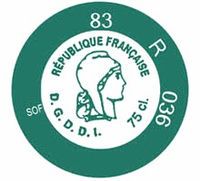
These markings vary from one country to another, depending on where the wine is produced and, more importantly, bottled.
The Numbers and Letters Around the Edge of the Capsule
The letters and numbers printed on a wine bottle capsule all have different meanings:
- The number before the letter: the French département in which the wine was bottled
- The number after the letter: reference or database number assigned to the bottler
- The letter between the two numbers: the bottler’s status
- R stands for ‘Récoltant’ (literally ‘harvester’): the producer bottled the wine themselves, and managed all processes from the harvesting, to vinification and bottling.
- N stands for ‘Négociant’ (‘merchant’): the bottler is not the harvester.
- E stands for Entrepositaire(‘authorised warehouse’): this often refers to a wine cooperative or large retailer who buys and sells wine under its name.
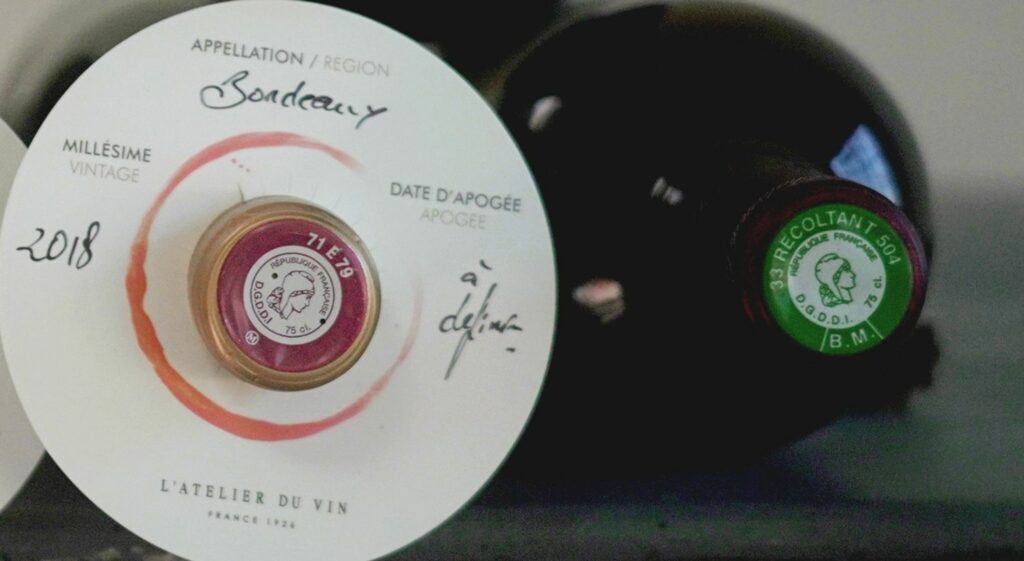
The Colour of the Capsule
French wine and alcohol bottle capsules follow an internationally regulated colour code:
- Blue: table wine or vin de pays
- Green: still or sparkling wine, in particular AOC or AOP among others
- Wine red: can replace green or blue except for AOC champagne
- Orange: only for natural sweet wines
- Other colours (red, white, gold, grey, etc.): each of these colours designates a different type of alcohol, such as rum, cognac or other liqueurs and spirits.
Foil Cutters, the First Step of a Wine Ritual
Some bottle openers include a capsule cutter. Otherwise, L’Atelier du Vin’s foil cutter is ideal for starting a tasting session! This wine tool for meticulous oenologists, master sommeliers and passionate cellarmen enables to cut the capsule with great precision.
Place the foil cutter at the top of the bottle, in a horizontal position, and rotate it around the neck, while pressing the sharp circular steel blades against the side, to cut the foil in a straight line. Our easy-to-use foil cutter is ideal for collectors and anyone who wants to save these printed stamps.
Our Corkscrews With Foil Cutters
Our L’Atelier du Vin sommelier Soft Machine and Oeno Motion corkscrews all include a foil cutter.
Our Soft Machine Rosewood and Soft Machine Brass both have a small retractable blade in the handle. Both of these models also include a bottle opener.
Our Soft Machine Crystal, on the other hand, includes a foil cutter in the shape of a sharp cutting wheel, discreetly positioned on the inner side of the lever for safety purposes.
Our Soft Machine Blade – Le Pierre corkscrew bears a resemblance to a Swiss Army knife. It includes 2 superb blades, a small capsule cutter and a large blade in the shape of a comma to cut bread, cheese or ham to enjoy with your wine.
Finally, our foolproof Oeno Motion lever corkscrew conceals two sharp wings on the inner side of its metal jaw. Clamp the jaw around the neck and simply rotate the bottle while pressing for a clean and precise cut.
Copyrights.
Editorial, visual and graphic elements strictly linked to copyrights. For any request for partial or total use, please contact us.


